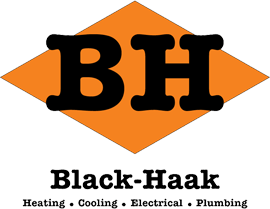
Having an EV charging station at your home is extremely convenient and will save you lots of money compared to having to constantly use public charging stations. Real estate statistics also show that homes with a Level 2 EV charging station tend to sell for more money than similar homes in the same area without one. If you’re looking to install an EV charging station at your home, here are some of the most important things you should consider beforehand.
1. Electric Code Requirements and Warranty Considerations
If you just want to use Level 1 charging at your home, you may not need to hire an electrician. For Level 1 charging, you simply need to plug your vehicle’s charging cord into a standard 120-volt outlet. As long as you have an available outlet where you plan to charge your vehicle, you should have no issues.
The problem is that Level 1 charging is far too slow to be a practical option for most people. A Level 2 charging station is much faster and will enable you to completely charge your vehicle each night. However, installing a Level 2 charging station is definitely not a DIY project and will require the assistance of an electrician.
Electric codes generally require that any type of major electrical work must be performed by an electrician who is licensed and certified in your state. Not only is it illegal to install a Level 2 EV charger yourself, but it can also be extremely dangerous due to the risk of electrocution and fire. If your charger isn’t installed properly, it could also easily get ruined and force you to buy a replacement.
All Level 2 charging stations must be on a dedicated 240-volt circuit, and the majority of homes don’t have a 240-volt circuit and outlet in their garages or near the driveways. EV chargers also require a special type of 240-volt outlet, and the type of outlet your charging station will need can vary depending on the brand and model you purchase. Many EV chargers use a NEMA 14-30 outlet, which is the same type of outlet that many electric clothes dryers use. Some instead use a NEMA 14-50 outlet like what is used for electric ranges, and others use a NEMA 6-50 outlet. If you don’t have the exact right type of outlet, the plug on the charging station won’t fit.
Another important reason why you need to have the installation performed by a licensed electrician is to ensure that the manufacturer’s warranty on the charging station is valid. If the installation isn’t performed by a licensed electrician, your warranty will be void.
2. Charging Station Location
One of the most important things to think about is which location will work best for the charging station. Many Level 2 charging stations are rated for indoor and outdoor use, but some are only for indoor use. If you are installing the station outside, you need to make sure you choose a NEMA 4-rated model. NEMA 4 is a type of electrical enclosure that ensures an electrical device has been designed and manufactured to function safely and effectively in an outdoor environment.
If you plan on charging your vehicle in the driveway, you’ll want to choose a location that is close enough for the charging station’s cord to reach. Most manufacturers include an 18-foot charging cable, but some offer optional 22-, 25- and 30-foot cables. As such, you’ll want to make sure that you take the length of the charging cable in mind when choosing the charger location. Unfortunately, 30 feet is typically the longest cable offered, which means a home EV charger likely won’t work if you only have on-street parking.
While you can install the charging station outside, fitting it inside a garage is the better option when possible. Although most charging stations are weather resistant, they still tend to last longer when installed inside and away from the elements. That said, the main reason that having the charging station in the garage is better is that it will work more effectively in winter.
Many NEMA 4-rated charging stations can work in temperatures down to -22 degrees Fahrenheit and as high as 122 degrees. However, EV chargers work most effectively and charge fastest when the ambient temperature is around 70 degrees. Studies have shown that charging a vehicle in temperatures around 36 degrees results in it charging around 36% slower compared to charging it in temperatures around 70 degrees. If your charger is outside and you use it when the temperature is near or below zero, the rate of charging will likely decrease by more than half.
Charging your vehicle in too hot conditions can also damage your battery and shorten its lifespan. At temperatures around 86 degrees or higher, the chemical process used to charge the battery speeds up. This results in the charger sending too much power, which causes the battery to heat up and suffer damage over time.
3. Electrical Panel Size and Amperage
Another reason you need to hire an electrician is so that they can perform an electrical load calculation. This calculation will make sure that your existing electrical panel has sufficient amperage to handle the additional electrical load from the charger. All Level 2 charging stations require at least a 50-amp circuit. However, many homes only have a 100-amp electrical panel since this is all that is required by the National Electric Code.
The only time a 100-amp service panel would really be sufficient to support an EV charger is if you don’t have central air conditioning or any other larger high-power appliances. This means that you may need to replace your electrical panel and upgrade to 150- or 200-amp service before installing the charging station.
There also has to be space in your electrical panel to install a new 240-volt double-pole circuit breaker. An electrician may be able to rewire and combine some existing circuits if the panel is full, but this generally isn’t an ideal option. Another possibility is to install a new sub-panel, but this is only an option if your existing panel has sufficient amperage.
4. Plug-In or Hardwire
One last thing to consider is whether you want to have the electrician hardwire your charging station into your electrical system or simply plug the station into a 240-volt outlet. Although most charging stations come with a plug, an electrician can easily remove the plug and hardwire the station instead.
Hardwiring your charging station is almost always the better option. The reason is that hardwired chargers tend to provide faster and more consistent charging rates compared to plug-in chargers. Plugging the station into an outlet also isn’t really any easier or less expensive since you will still need to have the electrician install the correct type of outlet. However, you may want to consider just plugging the charger in if you plan on moving in the near future. If you hardwire the station, you will have to pay an electrician to unwire and uninstall it when you move.
Black-Haak is the top choice for EV charger installation in Greenville and the Fox Valley area. Our team specializes in all other types of electrical installations as well as repairs, and we also offer expert plumbing, heating, and cooling services. To schedule a consultation with one of our electricians and learn more about your options for home EV charging, contact us today.

